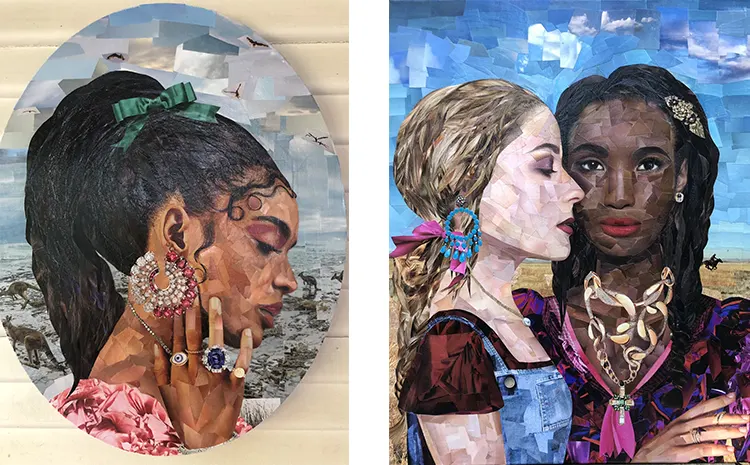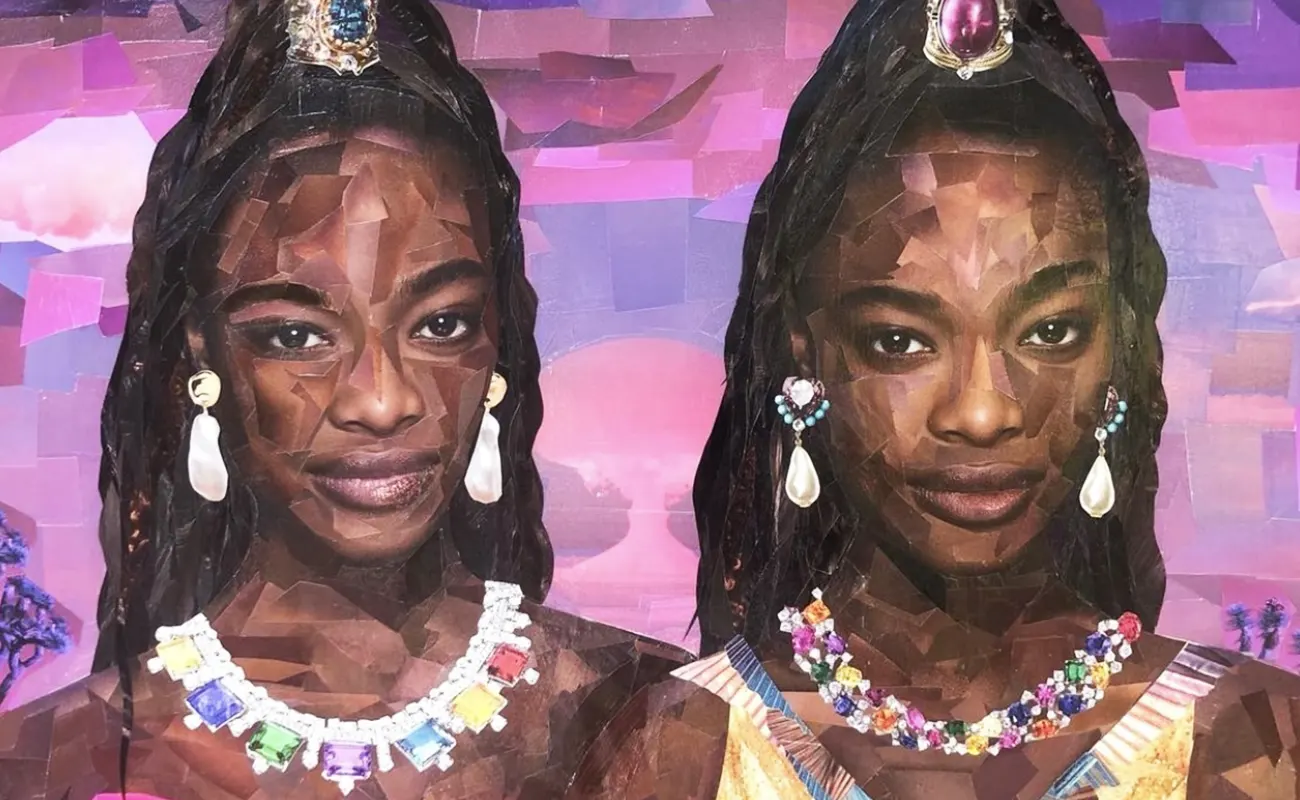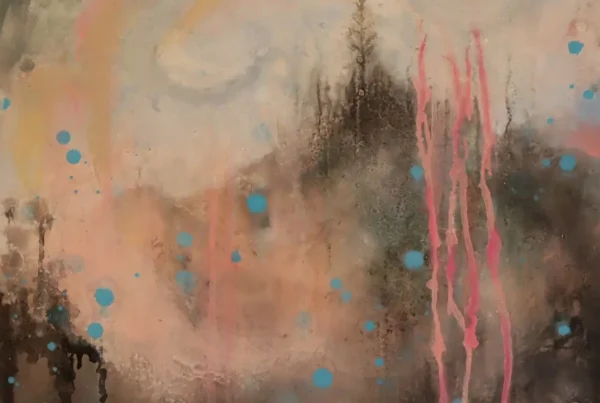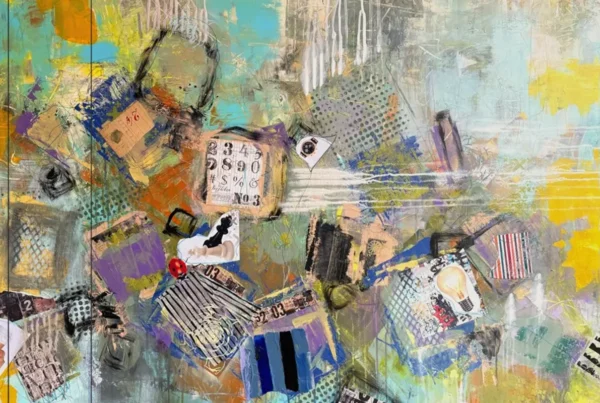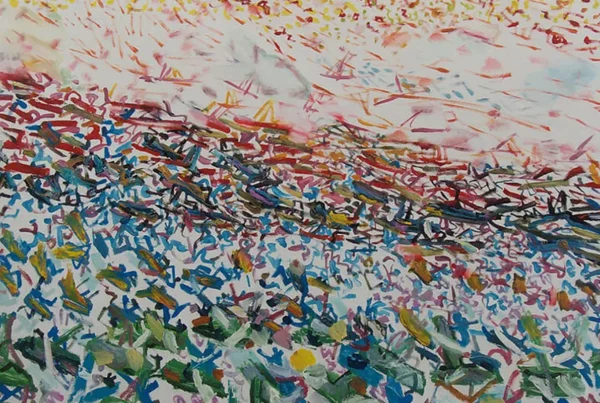“I became an artist because making art is one of the only activities that I participate in that makes me wholly content. It’s not that the creative process is easy, or I make art mindlessly, I just find creating allows me to be authentically me.”
Crafting a Unique Voice
Jo Beth Wharton grew up in Abilene, Texas, and moved to Sacramento in her 20s. From her earliest memories, Wharton’s life in Sacramento, California, has been immersed in the arts. Her childhood, a tapestry of drawing, painting, and creative play, laid the foundation for a lifelong journey in artistic expression. This early engagement with art wasn’t merely a pastime; it was the beginning of a profound connection with creativity that would define Wharton’s identity and career. In her college years, majoring in art history, she deepened her understanding of artistic theories, which in turn, expanded her practical art skills. This academic exposure didn’t just enrich her knowledge; it revolutionized her approach to art. She began to draw inspiration from classical art, reinterpreting these masterpieces with a modern, innovative twist, thus establishing a unique voice in her artistry.
Wharton’s choice to become a professional artist stemmed from a deep-seated contentment found in the act of creating. For her, making art is not a mindless activity but a process that allows her to express her truest self. This authentic self-expression led her to explore collage, inspired by her affinity for fashion magazines. Her initial experimentations with paper as a medium evolved into a hallmark of her style. Over the past seven years, she has committed herself exclusively to using paper, glue, and scissors to craft her distinctive pieces, a testament to her dedication to this form of expression.
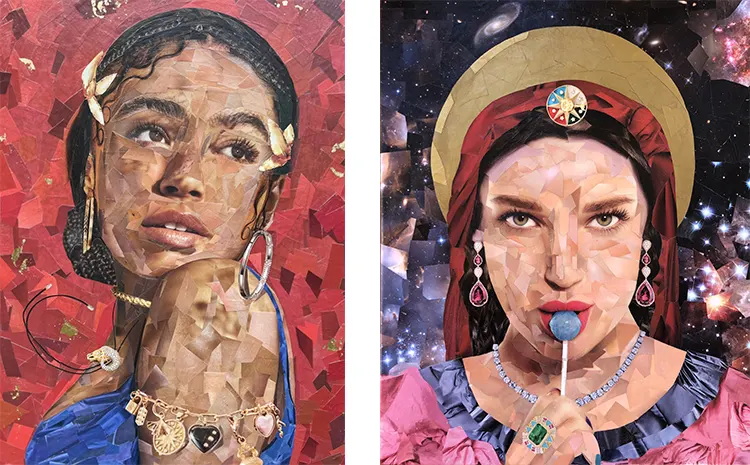
Jo Beth Wharton: A Neo-Renaissance Narrative
Wharton describes her artistic style as “Neo-Renaissance-esque,” a fitting label considering her work’s homage to the classic art of Ancient Greece, Rome, and the Renaissance, viewed through a contemporary feminist lens. Her pieces often explore modern interpretations of iconic figures, such as a twenty-first-century Virgin Mary grappling with the intricacies of social media and motherhood. Wharton’s art is a dialogue between the past and the present, where biblical imagery and ancient Greek mythology are seamlessly woven with personal and modern narratives. This fusion creates a unique perspective that is both reflective and forward-looking, offering commentary on current societal norms and roles.
Her creative process takes place in the heart of her home, amidst the comfort and chaos of everyday life. The choice of her living room, with an old coffee table as her workspace, is not just about physical comfort but also about remaining connected to her daily life and the people in it. This environment, surrounded by cut paper and the company of her dog, is where Wharton’s ideas transform into tangible art. Even the distractions, like her phone, become part of the creative process, challenging her focus and discipline. Wharton’s approach to her art is deeply personal and intertwined with her daily experiences, reflecting the genuine and authentic nature of her work.

A Tapestry of Ancient Inspirations
Jo Beth Wharton’s profound fascination with ancient civilizations significantly shapes her artistic narrative. Since her youth, the intricate art of the Minoans, Etruscans, Greeks, Romans, and Egyptians has captivated her, fueling a lifelong passion for historical and cultural exploration. This deep-seated admiration is vividly reflected in her artworks, which often draw upon the rich tapestry of these ancient societies. The enduring beauty of ancient mosaics, in particular, has left an indelible mark on her creative psyche, influencing both the style and substance of her work. Wharton’s extensive academic journey, which included studying art history in Florence, further enriched her connection with the Renaissance era. The profound impact of this period is evident in her art, where she seamlessly blends the classical grace of Renaissance art with a distinctly modern sensibility.
Despite moving away from religious beliefs, Wharton’s upbringing in a religious environment continues to subtly influence her work. Biblical themes frequently surface in her collages, but always with a subversive twist that challenges traditional narratives. This blend of reverence and rebellion is a hallmark of her style, offering a fresh perspective on familiar stories. Moreover, Wharton’s commitment to feminism is a central pillar of her work, driving her to explore and celebrate the multifaceted beauty and strength of women. Her art becomes a conduit for this exploration, challenging societal norms and championing the diverse and powerful roles of women throughout history and in contemporary society.

Jo Beth Wharton: A Personal Touch in Collage
Transitioning from traditional painting to collage was a pivotal moment in Wharton’s artistic journey. Initially, her primary medium was acrylics, but she felt constrained by the limitations of paint to fully express her dynamic and nuanced vision. The shift to collage opened up new avenues for creative exploration, allowing her to imbue her work with greater depth and complexity. Collage, with its inherent flexibility and versatility, became the perfect medium for Wharton to convey her ideas. The process of sifting through magazines to find the perfect piece of paper for each element of her artwork is akin to a treasure hunt, imbued with anticipation and excitement. This meticulous process, while time-consuming, is a form of meditation for Wharton, bringing her immense joy and satisfaction as her compositions come to life.
One of her most meaningful pieces, “You’re Prettier When You Smile,” encapsulates the essence of her artistic ethos. This portrait, featuring a woman set against a backdrop of a disintegrating world, yet still expected to maintain a placid demeanor, powerfully critiques societal expectations of women. Influences from renowned artists like Alice Neel, Kara Walker, and Henri Matisse are evident in this work, with Neel’s poignant portraits, Walker’s symbolic silhouettes, and Matisse’s vibrant use of color all finding echoes in Wharton’s collage. Through this piece and others, Wharton engages in a nuanced dialogue with her artistic predecessors while firmly establishing her unique voice in the contemporary art world.
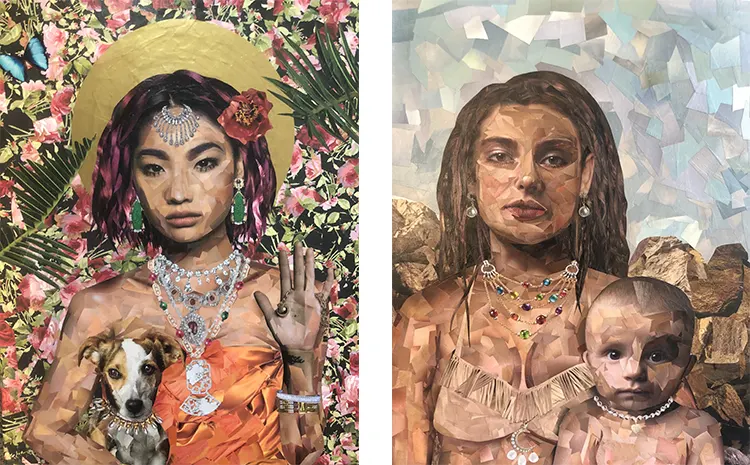
Envisioning a Dream Project
Jo Beth Wharton harbors a dream that melds her love for ancient art with her contemporary sensibilities – a life-size collage replica of the frescoes in the Villa dei Misteri in Pompeii. Her fascination with Pompeii, particularly these frescoes thought to depict a Dionysian cult wedding ritual, speaks to her deep connection with historical and mythological narratives. The predominantly female figures and the vivid red background of these frescoes resonate with Wharton’s artistic and thematic preferences. Her aspiration to recreate these frescoes in collage form, while incorporating contemporary women’s rituals, is a testament to her ambition and creative vision. This project would not only be a tribute to the ancient world but also a bridge connecting past and present, infusing historical art with modern-day relevance and perspectives.
Wharton’s artistic journey is a testament to the power of reinvention and the importance of staying true to one’s inspirations and convictions. Her unique approach to collage, deeply rooted in historical, cultural, and feminist themes, sets her apart in the contemporary art scene. Whether reflecting on the ancient world or critiquing modern society, her work remains consistently engaging, thought-provoking, and deeply personal. Jo Beth Wharton’s art is not just a visual feast; it is a journey through time and a celebration of the enduring strength and beauty of women.
